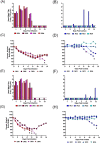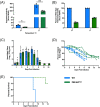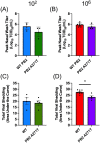Risk assessment of a highly pathogenic H5N1 influenza virus from mink
- PMID: 38750016
- PMCID: PMC11096306
- DOI: 10.1038/s41467-024-48475-y
Risk assessment of a highly pathogenic H5N1 influenza virus from mink
Abstract
Outbreaks of highly pathogenic H5N1 clade 2.3.4.4b viruses in farmed mink and seals combined with isolated human infections suggest these viruses pose a pandemic threat. To assess this threat, using the ferret model, we show an H5N1 isolate derived from mink transmits by direct contact to 75% of exposed ferrets and, in airborne transmission studies, the virus transmits to 37.5% of contacts. Sequence analyses show no mutations were associated with transmission. The H5N1 virus also has a low infectious dose and remains virulent at low doses. This isolate carries the adaptive mutation, PB2 T271A, and reversing this mutation reduces mortality and airborne transmission. This is the first report of a H5N1 clade 2.3.4.4b virus exhibiting direct contact and airborne transmissibility in ferrets. These data indicate heightened pandemic potential of the panzootic H5N1 viruses and emphasize the need for continued efforts to control outbreaks and monitor viral evolution.
© 2024. The Author(s).
Conflict of interest statement
The authors declare no competing interests.
Figures






References
-
- Centers for Disease Control and Prevention. Past Reported Global Human Cases with Highly Pathogenic Avian Influenza A(H5N1) (HPAI H5N1) by Country, 1997-2023.https://www.cdc.gov/flu/avianflu/chart-epi-curve-ah5n1.html (2023).
MeSH terms
Grants and funding
LinkOut - more resources
Full Text Sources
Medical

